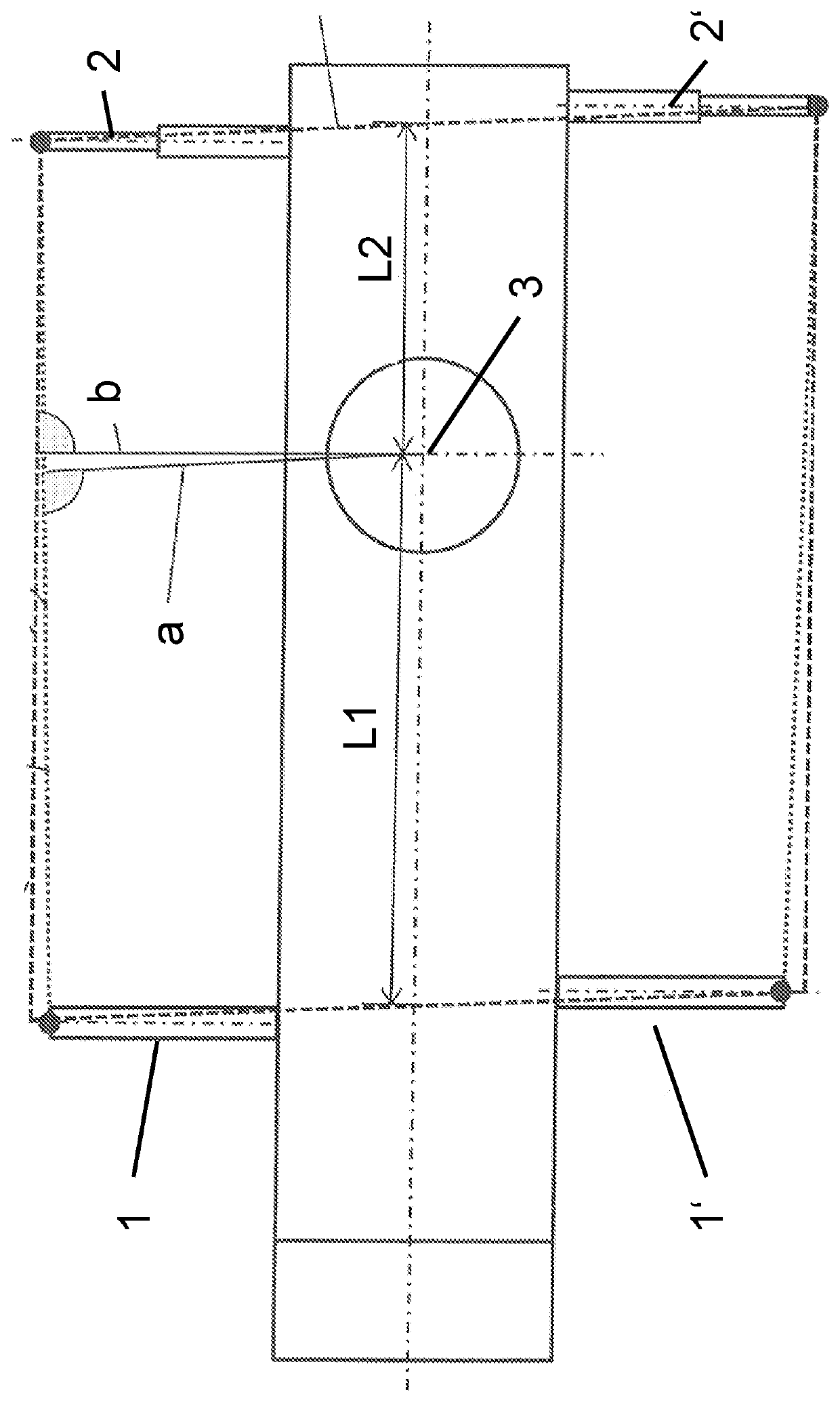Support for a crane
a technology for supporting a crane and a crane body, which is applied in the direction of braking devices for hoisting equipment, base supporting structures, load-engaging elements, etc., can solve the problems of crane loss of stability, overall load bearing capacity, and inability to simultaneously support all the tilt edges of the crane, and achieves the effect of light and as inexpensiv
- Summary
- Abstract
- Description
- Claims
- Application Information
AI Technical Summary
Benefits of technology
Problems solved by technology
Method used
Image
Examples
Embodiment Construction
[0020]The two first mutually oppositely disposed support beams 1, 1′ here have a smaller maximum deployment range than the two second mutually oppositely disposed support beams 2, 2′. The maximum deployment range can here be defined as the maximum horizontal extent of the support beams 1, 1′, 2, 2′ perpendicular to the longitudinal axis of the support and away from the support. This extent is at a maximum when the support beams 1, 1′, 2, 2′ have been telescoped or pivoted outwardly. The longitudinal axis of the support is recognizable as the longest, transversely extending chain-dotted line.
[0021]The dashed and dotted lines show the extent of a parallelogram-shaped support base from the prior art (dashed) and of a trapezoidal or at least approximately trapezoidal support base in accordance with the present disclosure (dotted).
[0022]Lateral tilt edges of the support bases are shown at the top and bottom in FIG. 1 and front or rear tilt edges of the support bases that are associated w...
PUM
 Login to View More
Login to View More Abstract
Description
Claims
Application Information
 Login to View More
Login to View More - R&D
- Intellectual Property
- Life Sciences
- Materials
- Tech Scout
- Unparalleled Data Quality
- Higher Quality Content
- 60% Fewer Hallucinations
Browse by: Latest US Patents, China's latest patents, Technical Efficacy Thesaurus, Application Domain, Technology Topic, Popular Technical Reports.
© 2025 PatSnap. All rights reserved.Legal|Privacy policy|Modern Slavery Act Transparency Statement|Sitemap|About US| Contact US: help@patsnap.com

